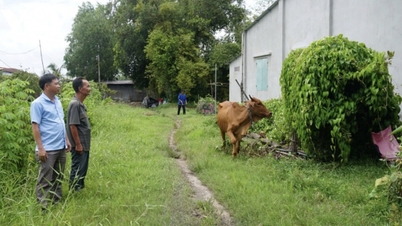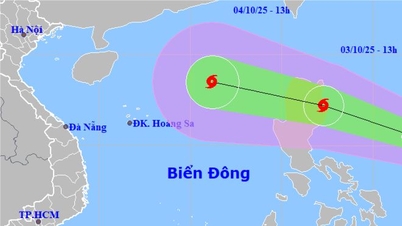There are currently more than 400 million internet users in Southeast Asia. This contributes to the rapid growth of the digital economy in the region, which is forecast to reach 1,000 billion USD by 2030. However, along with that comes the increasing threat of cyber attacks.

Distributed cybersecurity architecture
According to a recent report by Singapore-based cybersecurity firm Cyfirma, cybercrime in Southeast Asia has increased by 82%. Cyberattacks mainly targeted Singapore, followed by Thailand, Vietnam, and Indonesia. Previously, the International Criminal Police Organization's "ASEAN Cyber Threat Assessment 2021" report listed the main cybersecurity threats facing the ASEAN region as: business email fraud, phishing, ransomware, e-commerce data theft, crimeware, cyber fraud, and cryptocurrency mining.
According to thepaper.cn, amid the increasing number of serious cyberattacks, ASEAN’s ability to prepare for, respond to, and recover from cyberattacks remains relatively low. Although significant progress has been made in enhancing cybersecurity in individual Southeast Asian countries and the region as a whole, the lack of coordinated cybersecurity standards remains an obstacle.
Currently, the cybersecurity architecture in the ASEAN region remains fragmented. The lack of a comprehensive cybersecurity governance strategy is a major challenge for ASEAN. ASEAN member states are affected by economic and digital differences, and are subject to different regulatory constraints, leading to different priorities in dealing with cybersecurity issues. In addition, timely information sharing on sensitive data faces major challenges as ASEAN countries prioritize national security and sovereignty , and interoperability is bound to be limited.
Digital divide
The digital divide in ASEAN has hampered the ability to act collectively to address data security threats. There is a large gap in internet resources among ASEAN countries, with internet penetration rates ranging from 26% in Laos to 95% in Brunei. At the national level, poor households and communities or those in remote areas have relatively weak network infrastructure. In addition, fixed broadband internet is underdeveloped in some ASEAN countries, partly due to a lack of infrastructure such as electricity. According to a report by the International Energy Agency, although 90% of the population in Southeast Asia has access to electricity, 65 million people still have difficulty accessing it.
Less developed countries are more focused on solving basic network problems, thus reducing the need and consideration for cybersecurity. The number of secure internet servers per million people in ASEAN countries is increasing year by year, but the number varies greatly between countries. In 2020, Singapore had 128,378 servers per million people while Myanmar had only 14 servers per million people.
There are also clear differences in the level of digital development among ASEAN member countries. The gap in cybersecurity level almost divides ASEAN countries into 3 types: Singapore and Malaysia are the group with a complete system of cybersecurity management, the rest are the group with incomplete systems and the group with backward systems...
MINH CHAU synthesis
Source




![[Photo] Keep your warehouse safe in all situations](https://vphoto.vietnam.vn/thumb/1200x675/vietnam/resource/IMAGE/2025/10/1/3eb4eceafe68497989865e7faa4e4d0e)
![[Photo] President of the Cuban National Assembly visits President Ho Chi Minh's Mausoleum](https://vphoto.vietnam.vn/thumb/1200x675/vietnam/resource/IMAGE/2025/10/1/39f1142310fc4dae9e3de4fcc9ac2ed0)
![[Photo] Hanoi morning of October 1: Prolonged flooding, people wade to work](https://vphoto.vietnam.vn/thumb/1200x675/vietnam/resource/IMAGE/2025/10/1/189be28938e3493fa26b2938efa2059e)























































































Comment (0)